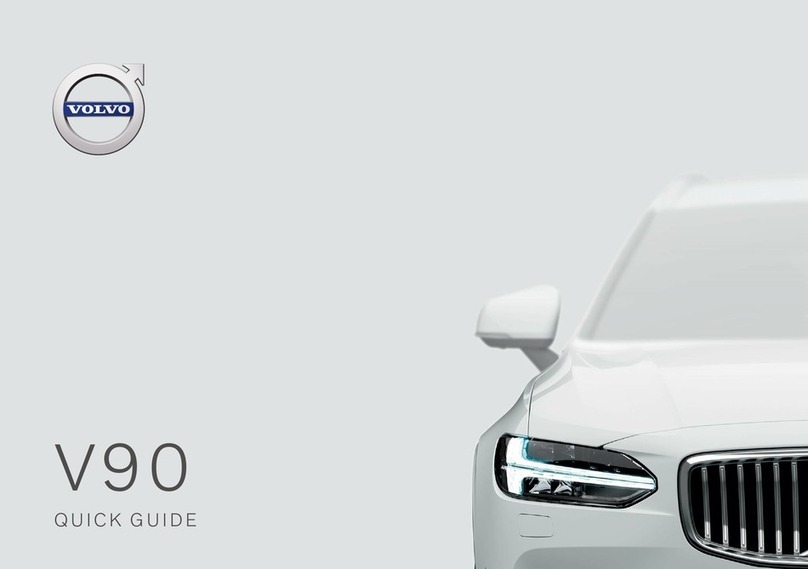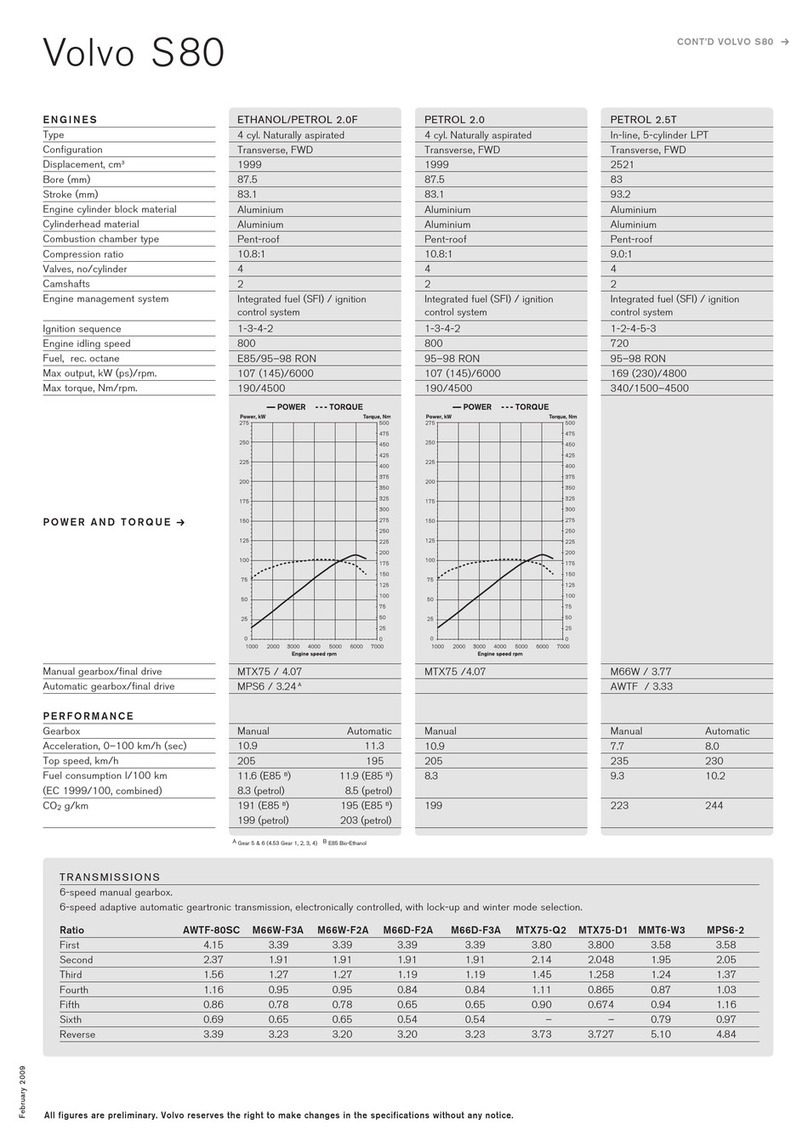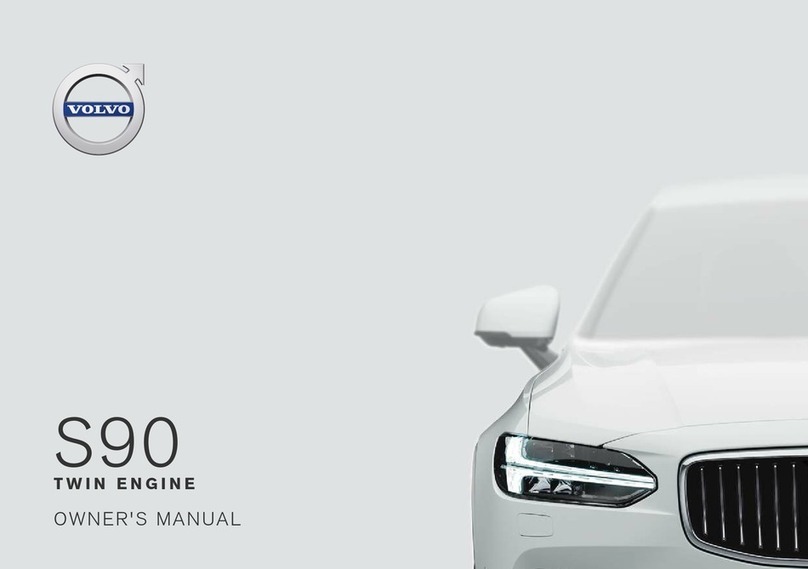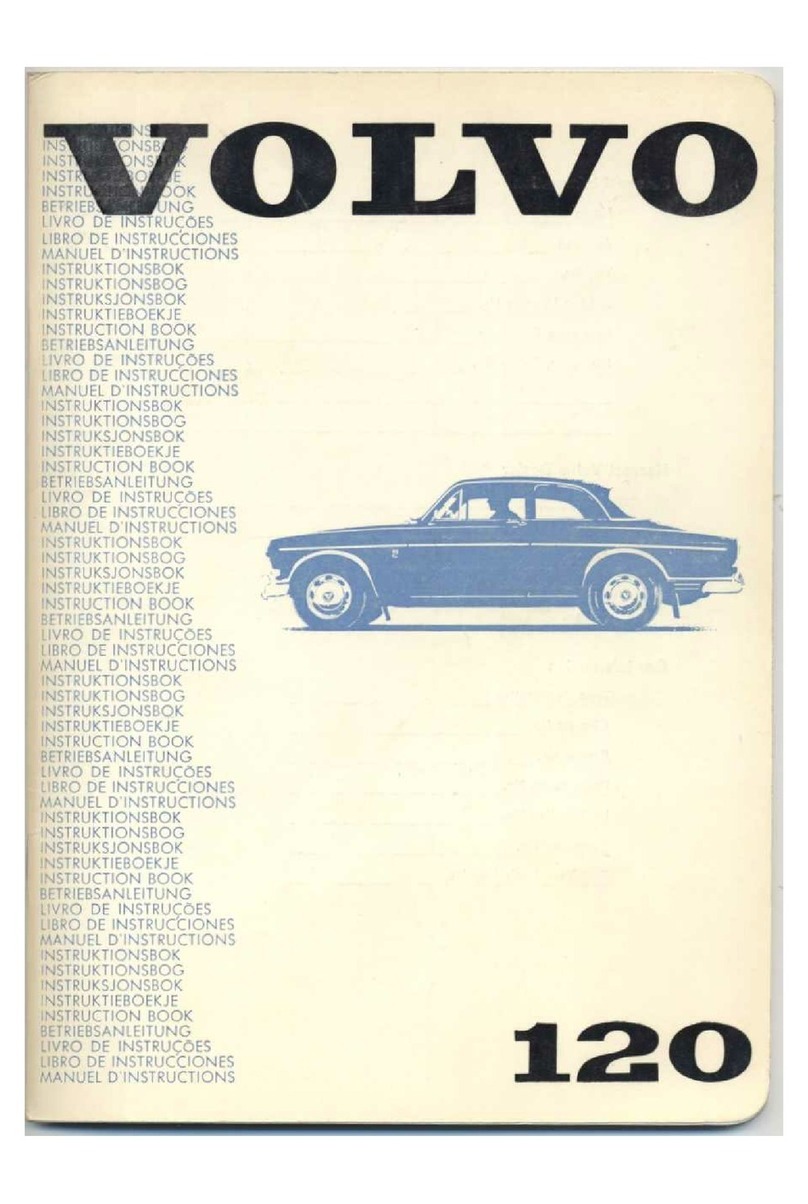
This publication is intended for rescue personnel especially trained for rescue operations at vehicle accidents. The
folder shows C40 Recharge Pure Electric equipped with all optional and accessory equipment.
For information about the vehicle’s features, embedded systems and safety systems we refer to the owner’s
manual available digitally in the center display of the vehicle.
This guide is intended to be used by trained first responders and rescuers and assumes that the reader has pro-
fessional level skills in safely responding to emergencies and rescue situations described in this guide, including
those involving damaged vehicles. This guide is not intended for retailers, end consumers or any other reader
that is not described in the preceding sentence. This guide may be updated by Volvo Cars at any time. This
guide applies to the Volvo C40 Recharge Pure Electric vehicle only and includes information about the specific
vehicle’s structure and components, including location and description of high voltage components. While failure
to follow this guide may result in serious injury or death, each emergency situation is unique and this guide may
not address every scenario and even if this guide is followed, serious injury or death may occur.
Copyright © 2021 Volvo Car Corporation
Special texts
WARNING
Warning texts appear if there is risk of injury.
!IMPORTANT
Important texts appear if there is risk of
damage.
iNOTE
Note texts give advice or tips that facilitate
the use of e.g. features and functions.
Option/accessory
We continuously work to develop and improve our
products. Modifications can mean that information,
descriptions and illustrations in this publication
differ from the equipment in the vehicle. We reserve
the right to make changes without prior notice.
Vehicles may be equipped differently depending on
market requirements and national or local laws and
regulations. In addition to standard equipment, the
vehicle can also have been modified with optional
equipment (factory-installed equipment) and
certain accessories (extra retrofitted equipment).
All, at the time of publication known, options and
accessories are marked with an asterisk: *.
Introduction Electrical Vehicle Emergency Response
Guide



















































